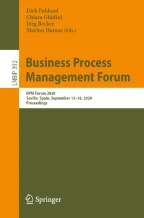
Predictive business process monitoring (PBPM) techniques predict future process behaviour based on historical event log data to improve operational business processes. Concerning the next activity prediction, recent PBPM techniques use state-of-the-art deep neural networks (DNNs) to learn predictive models for producing more accurate predictions in running process instances. Even though organisations measure process performance by key performance indicators (KPIs), the DNN’s learning procedure is not directly affected by them. Therefore, the resulting next most likely activity predictions can be less beneficial in practice. Prescriptive business process monitoring (PrBPM) approaches assess predictions regarding their impact on the process performance (typically measured by KPIs) to prevent undesired process activities by raising alarms or recommending actions. However, none of these approaches recommends actual process activities as actions that are optimised according to a given KPI. We present a PrBPM technique that transforms the next most likely activities into the next best actions regarding a given KPI. Thereby, our technique uses business process simulation to ensure the control-flow conformance of the recommended actions. Based on our evaluation with two real-life event logs, we show that our technique’s next best actions can outperform next activity predictions regarding the optimisation of a KPI and the distance from the actual process instances.
This is a preview of subscription content, log in via an institution to check access.